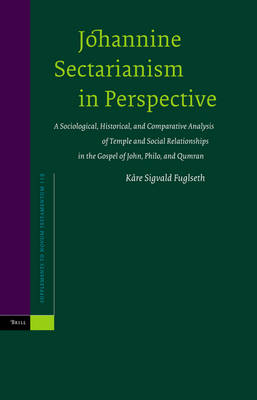Novum Testamentum, Supplements
1 primary work
Book 119
The central aim of the investigation is to evaluate the claim that the Gospel of John was a product of a 'sectarian' milieu.
Fuglseth is using methods primarily derived from sociology and the study of new religious movements today. He discusses in particular the 'cult'-model as an alternative to 'sect,' and compares the Johannine texts with texts from two contemporary milieus: Philo and the Dead Sea Scrolls. The thesis is embedded in a comprehensive survey of research and discussions of methods and of the existence of a Johannine community.
There are still serious debates going on about the existence and nature of the Johannine group, its 'Jewish' roots and settings, the attitude to the 'Jews' and the 'synagogue', and the two levels of meanings in the Johannine text according to Martyn and Brown. In this situation Fuglseth's investigation is of great current interest and gives new answers to central questions in the Johannine research.
Fuglseth is using methods primarily derived from sociology and the study of new religious movements today. He discusses in particular the 'cult'-model as an alternative to 'sect,' and compares the Johannine texts with texts from two contemporary milieus: Philo and the Dead Sea Scrolls. The thesis is embedded in a comprehensive survey of research and discussions of methods and of the existence of a Johannine community.
There are still serious debates going on about the existence and nature of the Johannine group, its 'Jewish' roots and settings, the attitude to the 'Jews' and the 'synagogue', and the two levels of meanings in the Johannine text according to Martyn and Brown. In this situation Fuglseth's investigation is of great current interest and gives new answers to central questions in the Johannine research.
